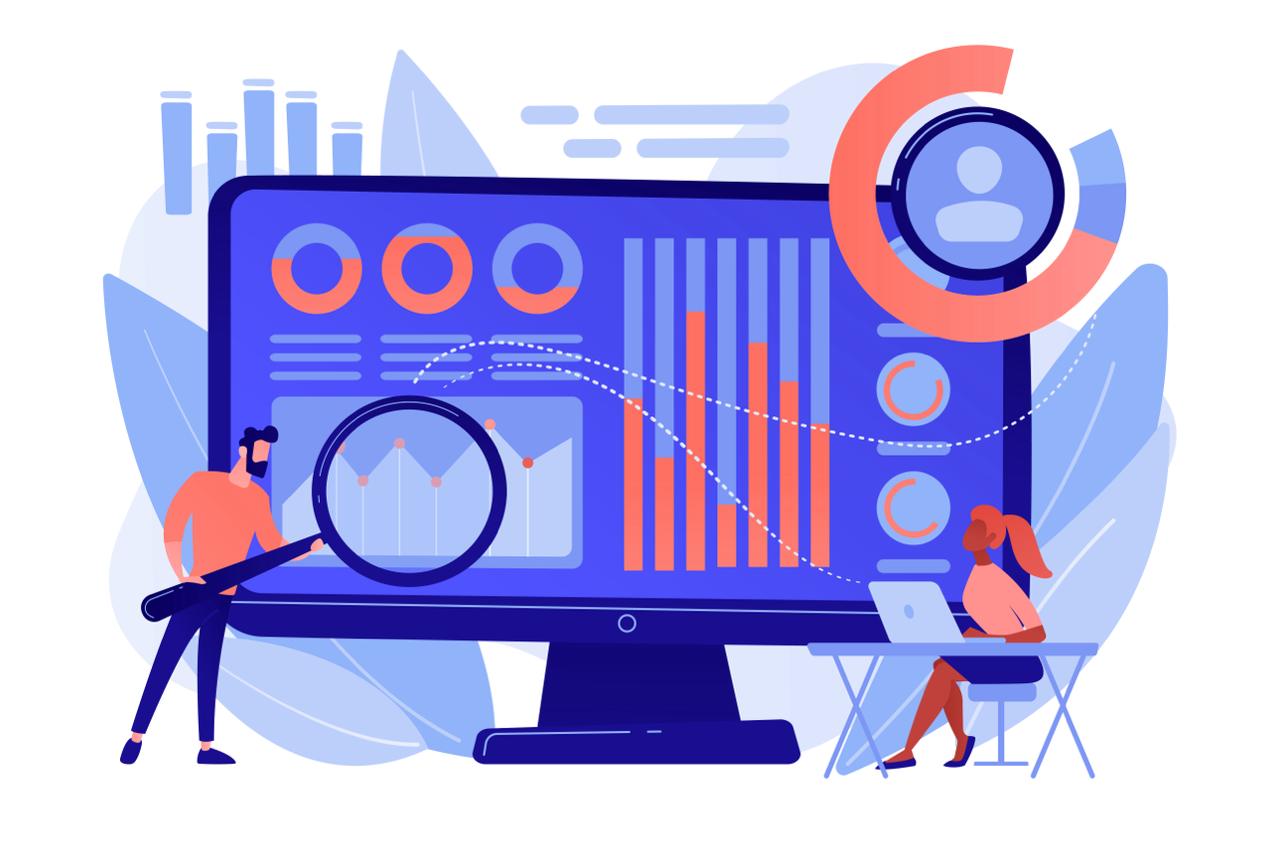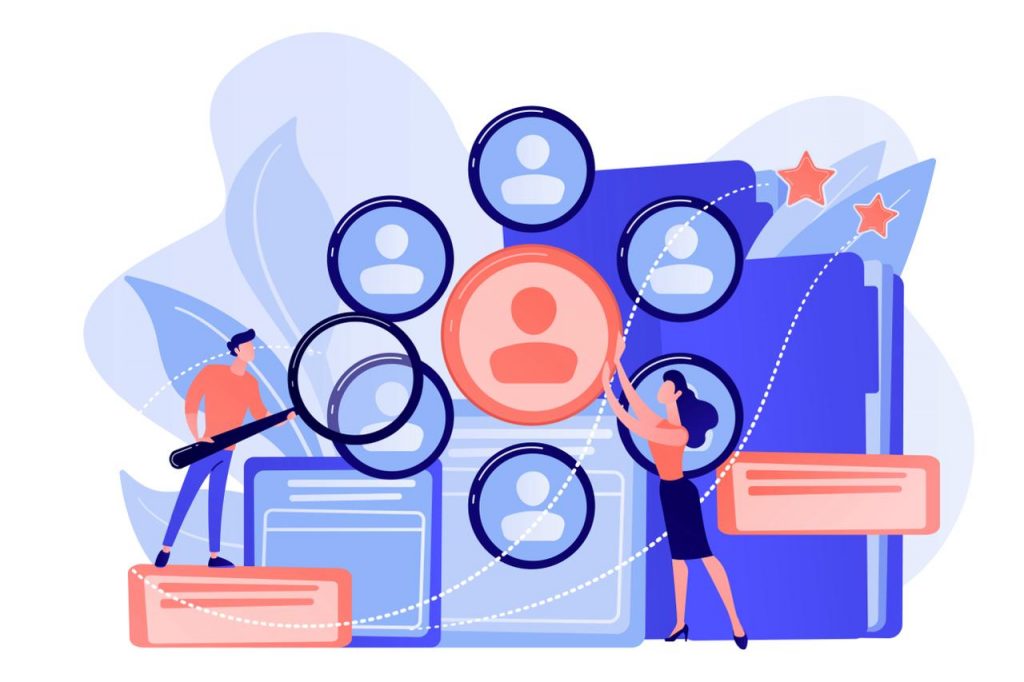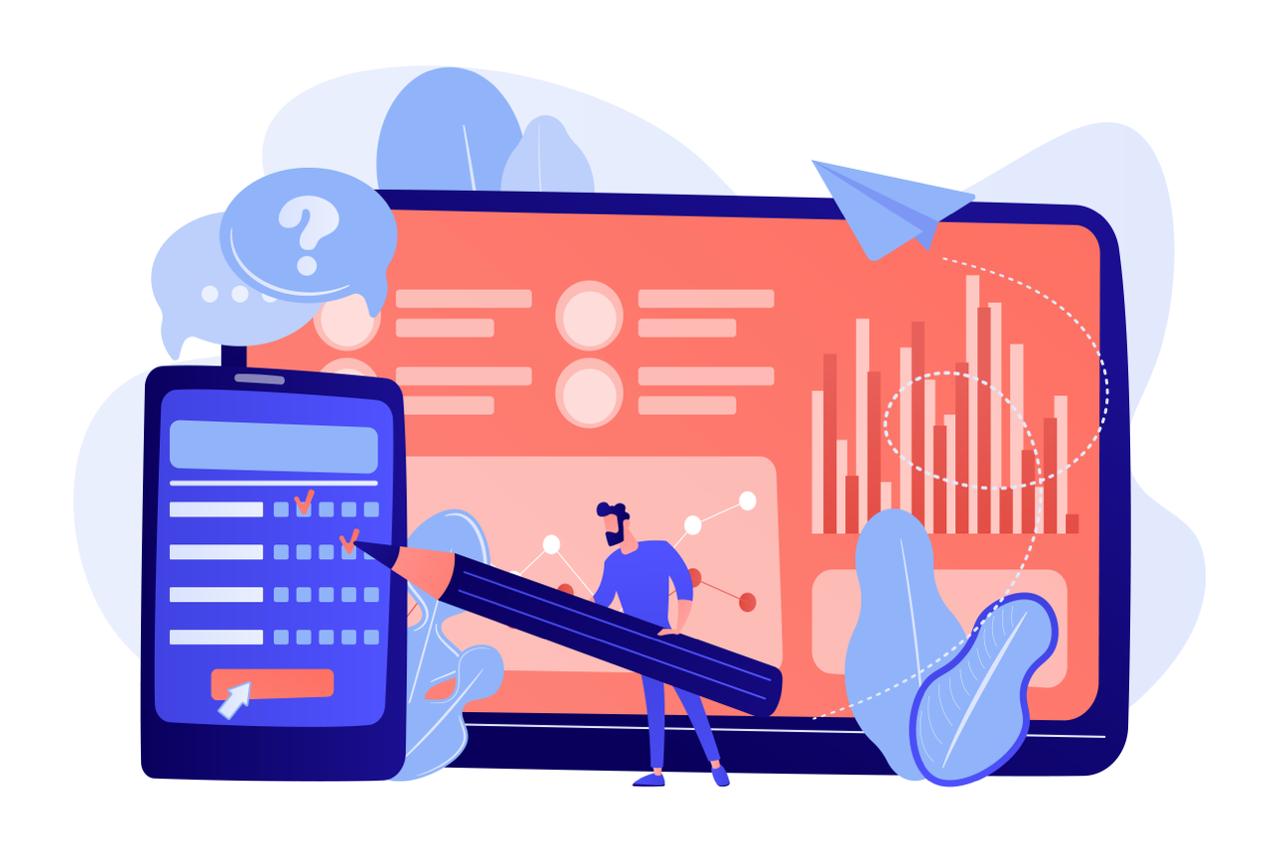
HR Analytics: Benefits, Types, and Strategic Impact
In today’s data-driven business environment, many organizations turn to HR analytics consulting services to build internal data capabilities, develop tailored…
In today’s data-driven business environment, many organizations turn to HR analytics consulting services to build internal data capabilities, develop tailored metrics, and ensure that their analytics strategies align with overall business objectives. These services often play a critical role in helping companies navigate the complexities of data integration, dashboard creation, and actionable reporting.
Moreover, with the rise of cloud platforms and advancements in artificial intelligence, HR analytics has become more sophisticated and accessible than ever before. Technologies such as predictive analytics and machine learning can now forecast employee attrition, recommend personalized learning paths, or even match candidates to roles based on behavioral and performance data. These innovations not only enhance HR decision-making but also enable organizations to create more agile, responsive, and people-centric workplaces.
What is HR Analytics?
At its core, HR analytics is the bridge between raw employee data and strategic decision-making. Rather than relying on intuition or isolated metrics, HR professionals can leverage data-driven insights to understand workforce trends, measure the impact of HR initiatives, and guide organizational strategy. This analytical approach empowers HR departments to transition from traditional, operational roles—focused on administrative tasks—to more strategic functions that influence broader business outcomes.
By collecting and analyzing data related to recruitment, employee performance, engagement, retention, and more, HR analytics helps leaders make informed decisions that enhance productivity, reduce turnover, and improve overall employee satisfaction. It becomes a powerful tool for identifying patterns and predicting future workforce needs, allowing organizations to proactively address challenges before they escalate.
Types of HR Analytics
Understanding the types of HR analytics is key to maximizing its potential. There are four primary types that each serve different strategic purposes:
1. Descriptive Analytics
This is the most basic form of HR analytics. It answers the question, “What happened?” Descriptive analytics uses historical data to summarize past trends. For example, HR teams may use dashboards to track turnover rates, average time-to-hire, or absenteeism. This type of analysis is useful for establishing a baseline and identifying patterns.
2. Diagnostic Analytics
This type of analysis digs deeper into the “why” behind the numbers. It helps identify root causes of issues seen in descriptive analytics. For example, if turnover is high in one department, diagnostic analytics can pinpoint whether it’s related to management style, workload, or other variables.
3. Predictive Analytics
Predictive analytics uses algorithms and machine learning to forecast future outcomes based on historical data. For example, HR teams can use predictive models to identify which employees are at risk of leaving or to forecast hiring needs. This enables proactive planning and intervention.
4. Prescriptive Analytics
The most advanced type, prescriptive analytics, provides actionable recommendations. It not only forecasts what will happen but also suggests the best course of action. For example, it can recommend the best candidate for promotion based on past performance, engagement scores, and skills.
By understanding and applying these types of HR analytics, organizations can transition from reactive HR management to proactive, strategic talent planning.
Importance and Benefits of HR Analytics
Just like any tool or strategy, HR analytics has its advantages and limitations. Here’s a quick look at the pros and cons of HR analytics:
Pros
- Data-Driven Decision-Making: Enables objective, fact-based HR strategies.
- Increased Efficiency: Automates repetitive reporting and helps allocate resources more effectively.
- Better Talent Management: Enhances hiring, onboarding, and retention strategies.
- Strategic Alignment: Aligns workforce planning with broader business goals.
- Predictive Insights: Forecasts turnover, performance, and workforce trends.
Cons
- Complexity: Requires technical skills and understanding of data science principles.
- Cost of Implementation: Initial investments in software and training can be significant.
- Privacy Risks: Mishandling sensitive employee data can lead to legal and reputational issues.
- Data Overload: Without clear goals, large volumes of data can overwhelm rather than inform.
Understanding the advantage of HR analytics requires weighing these trade-offs and deciding how it fits into the organization’s strategic goals.
The benefits of HR analytics extend across multiple areas of human capital management, from recruitment and development to employee retention and workforce planning. Here’s why it’s so important:
1. Improved Decision-Making
One of the primary HR analytics benefits is data-driven decision-making. Instead of relying on gut feelings or outdated methods, HR leaders can make evidence-based decisions. This leads to more accurate hiring, better workforce planning, and higher employee satisfaction.
2. Enhanced Recruitment and Retention
HR analytics can optimize the recruitment process by identifying the most effective hiring channels, assessing candidate quality, and forecasting future hiring needs. It also helps in retaining talent by identifying factors contributing to turnover and suggesting interventions before employees exit.
3. Boosted Employee Engagement
Employee engagement is directly tied to productivity and performance. Analytics in HR helps monitor engagement through surveys, feedback tools, and performance metrics. By analyzing this data, companies can implement targeted strategies to enhance employee experience and motivation.
4. Cost Savings
Through better workforce planning and reduced turnover, companies can significantly cut costs. HR analytics identifies inefficiencies and areas where resources are being underutilized, enabling more efficient allocation of budgets and personnel.
5. Strategic Workforce Planning
Using HR metrics and analytics, organizations can anticipate workforce needs, skill gaps, and training requirements. This ensures the business is prepared for future demands and can adapt to changing market conditions.
6. Diversity and Inclusion
HR analytics also plays a crucial role in promoting diversity. It can identify representation gaps, analyze pay equity, and ensure fair hiring practices. Companies can track D&I initiatives and measure progress over time.
7. Compliance and Risk Management
HR analytics helps organizations stay compliant with labor laws and regulations by tracking key indicators like working hours, leave, and employee grievances. It also helps in identifying and mitigating potential HR risks.
As businesses increasingly recognize the value of people as strategic assets, the demand for HR analytics consulting has grown. Consulting services help companies implement the right HR analytics software, train staff, and develop robust frameworks to make the most of their data.

How Does HR Analytics Work?
In a data-driven business environment, organizations are increasingly turning to HR analytics to optimize workforce management. But how does HR analytics work? Simply put, it involves collecting and analyzing employee data to guide HR decisions and strategies. From recruitment and onboarding to performance management and retention, the HR analytics process supports smarter, data-backed decision-making.
The process of HR analytics begins with defining business questions—such as identifying reasons for high turnover or evaluating the effectiveness of training programs. Once the objective is clear, relevant data is collected from HR systems, surveys, and performance tools. This data is then cleaned and analyzed using statistical models, often with the help of specialized software. The results help HR leaders make evidence-based decisions that align with organizational goals.
Understanding the need of HR analytics is critical today. As companies face global competition, remote work shifts, and talent shortages, HR analytics enables better forecasting, resource allocation, and employee engagement. It goes beyond basic reports—using predictive and prescriptive models to anticipate trends and suggest actionable solutions.
Organizations like ours, with experience in IT consulting, hiring, and onboarding in Belarus, are well-positioned to use HR analytics for identifying the right candidates, improving onboarding experiences, and enhancing workforce planning.
Key HR Metrics
To make sense of employee data, HR professionals rely on a set of standardized metrics. These HR metrics serve as performance indicators across the employee lifecycle and are critical to the HR analytics process. Here are some of the most commonly used metrics:
1. Turnover Rate
This measures how many employees leave the organization over a given time period. High turnover could indicate issues with job satisfaction, culture, or management.
2. Time to Hire
Time to hire refers to the average number of days taken to fill a vacancy. This metric helps evaluate the efficiency of the recruitment process.
3. Cost per Hire
This metric calculates the total cost involved in hiring a new employee, including advertising, recruiter fees, and onboarding expenses.
4. Absenteeism Rate
High rates of absenteeism can indicate low engagement or wellness issues. Monitoring this metric helps HR departments take proactive wellness measures.
5. Training Effectiveness
By measuring pre- and post-training performance, HR can assess whether learning and development programs are making an impact.
6. Employee Engagement Score
Derived from surveys and feedback tools, this score reveals how connected employees feel to their roles and the company.
These HR analytics types of metrics can be descriptive, predictive, or prescriptive. Their proper use can help HR transform from a cost center into a value-adding strategic function.
HR Data Analysis Process
The HR data analysis process is a structured approach to turning raw data into actionable insights. Here’s a breakdown of the core steps involved:
Step 1: Define Objectives
Before diving into data, it’s essential to clarify the goals. Is the company trying to reduce turnover? Improve employee engagement? Increase diversity? A clear objective shapes the analysis process.
Step 2: Collect Data
Data comes from various sources including HRIS systems, performance reviews, exit interviews, payroll, attendance records, and surveys.
Step 3: Clean and Prepare Data
This involves removing duplicates, filling in missing values, and formatting the data for analysis. Clean data ensures accurate insights.
Step 4: Analyze Data
Using statistical tools and HR analytics software, analysts look for patterns, correlations, and trends. For example, they might explore whether certain onboarding practices lead to higher retention rates.
Step 5: Interpret Results
The insights from the analysis must be aligned with business context. This is where domain expertise is crucial—understanding what the data says and how to act on it.
Step 6: Take Action
Based on insights, HR teams design and implement strategies, such as refining hiring processes or launching engagement initiatives.
Step 7: Monitor and Optimize
After implementing changes, HR should continuously monitor key metrics to assess whether the strategies are working and make adjustments as needed.
This cycle ensures a sustainable and effective use of analytics in HR decision-making.
HR Analytics Challenges
Despite its potential, HR analytics comes with its own set of obstacles. Recognizing the challenges in HR analytics is key to overcoming them and leveraging its full potential.
1. Data Quality and Integration
Many HR teams struggle with fragmented data spread across multiple systems. Inconsistent formats and outdated records can hinder analysis. Without a unified HR system, data silos make it difficult to gather complete insights.
2. Lack of Analytics Skills
A major challenge with HR analytics is the skills gap. Traditional HR professionals may not be trained in data analysis, statistics, or software tools. Bridging this gap often requires training or collaboration with data teams.
3. Privacy and Ethical Concerns
Handling employee data requires strict adherence to privacy laws like GDPR. Companies must be transparent about data usage and ensure confidentiality to maintain trust.
4. Resistance to Change
HR analytics introduces a data-driven culture, which may face resistance from managers used to intuition-based decision-making. Change management and leadership support are essential to success.
5. High Implementation Costs
The cost of purchasing advanced analytics tools or hiring specialists can be a barrier, especially for small to mid-sized companies.
Despite these challenges with HR analytics, the long-term benefits outweigh the risks. By addressing these issues with strategic planning, proper tools, and HR analytics consulting, companies can build sustainable, high-impact analytics practices.
Conclusion
HR analytics has emerged as a powerful tool to drive transformation in modern organizations. By following a structured process of HR analytics, tracking essential metrics, and addressing common challenges in HR analytics, companies can unlock immense value from their workforce data.
The benefit of HR analytics is clear—it empowers HR professionals to move beyond intuition and become strategic contributors to business growth. From improving hiring outcomes to enhancing employee engagement, the advantage of HR analytics lies in its ability to link people strategies with business outcomes.
For organizations like ours, operating in IT consulting, hiring, and management across Belarus, embracing HR analytics is more than a trend—it’s a necessity for staying competitive and delivering measurable results in talent acquisition and retention.
Our Blog
The latest news in our blog
A Complete Guide to Job Classification
The IT sector continues to develop actively, and with it, the diversity of positions, roles, and specializations within companies grows….
Brief Overview of Labor Legislation in Belarus
Belarus remains an attractive point on the map for international IT companies due to its strong engineering school, competitive hiring…
How EOR Simplifies Payroll and Tax Management in Belarus
Belarus remains one of the most attractive markets in Eastern Europe for hiring IT and digital professionals. Companies from the…
Contact
We’re available for the new projects



